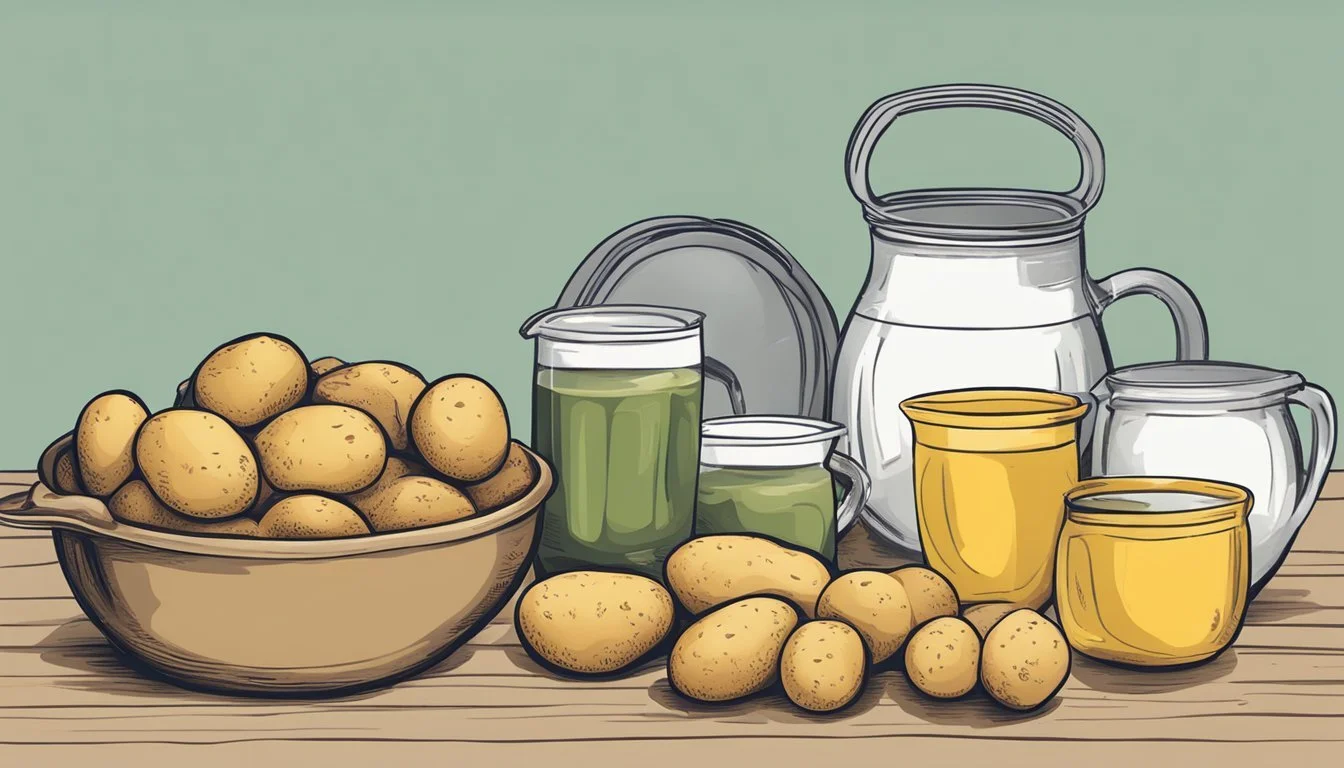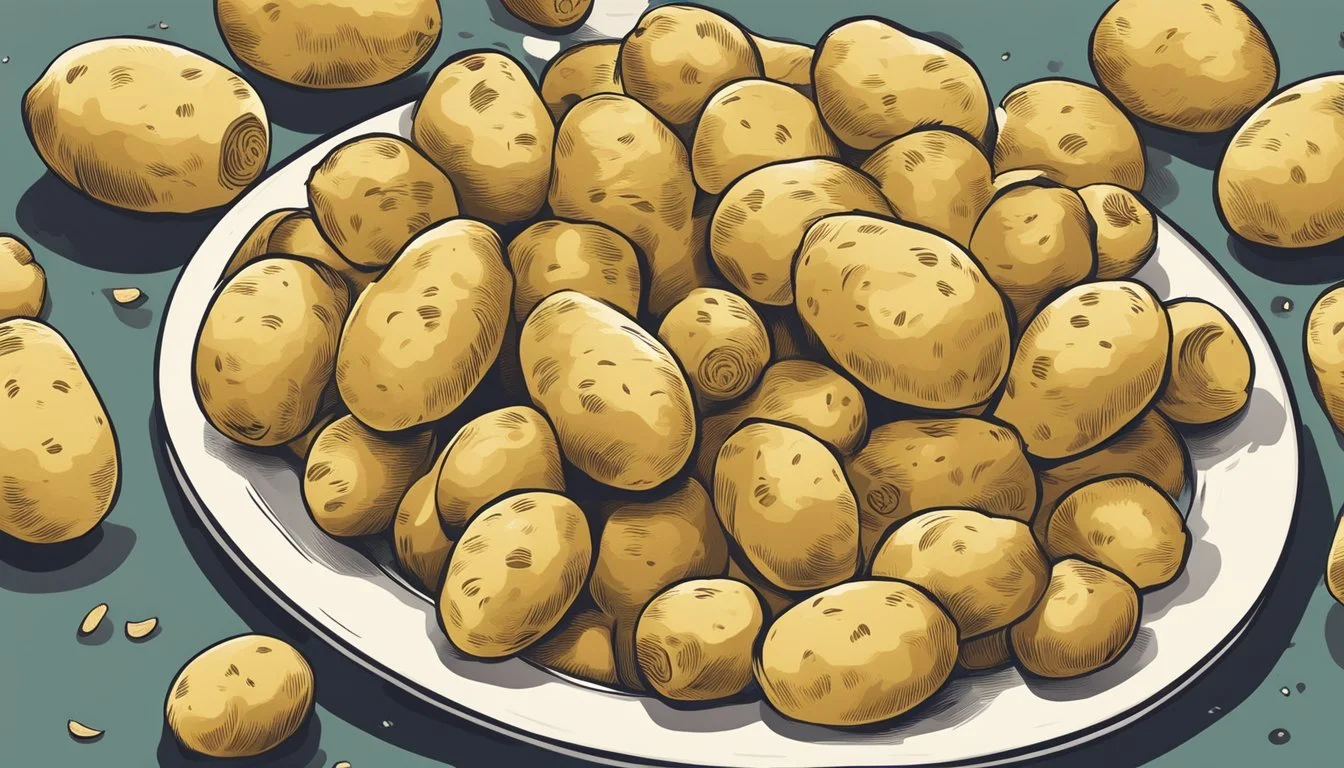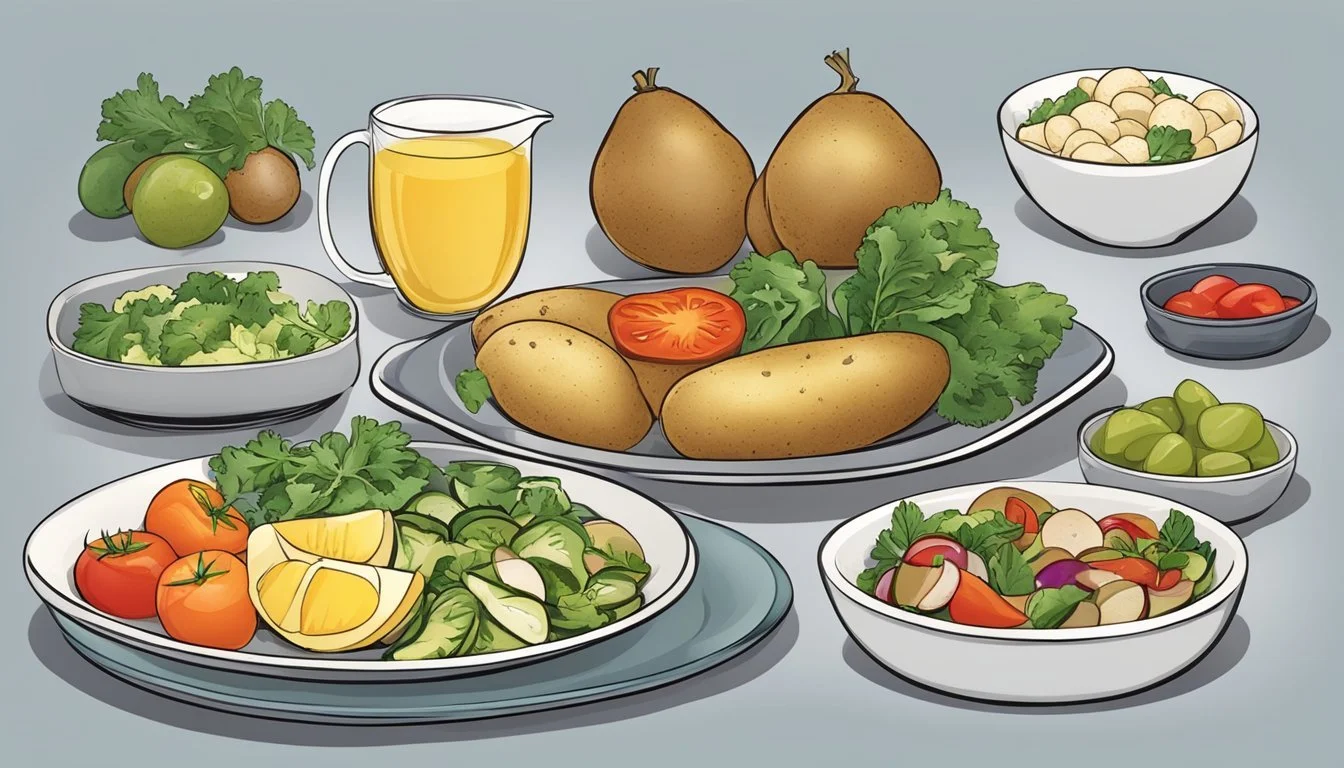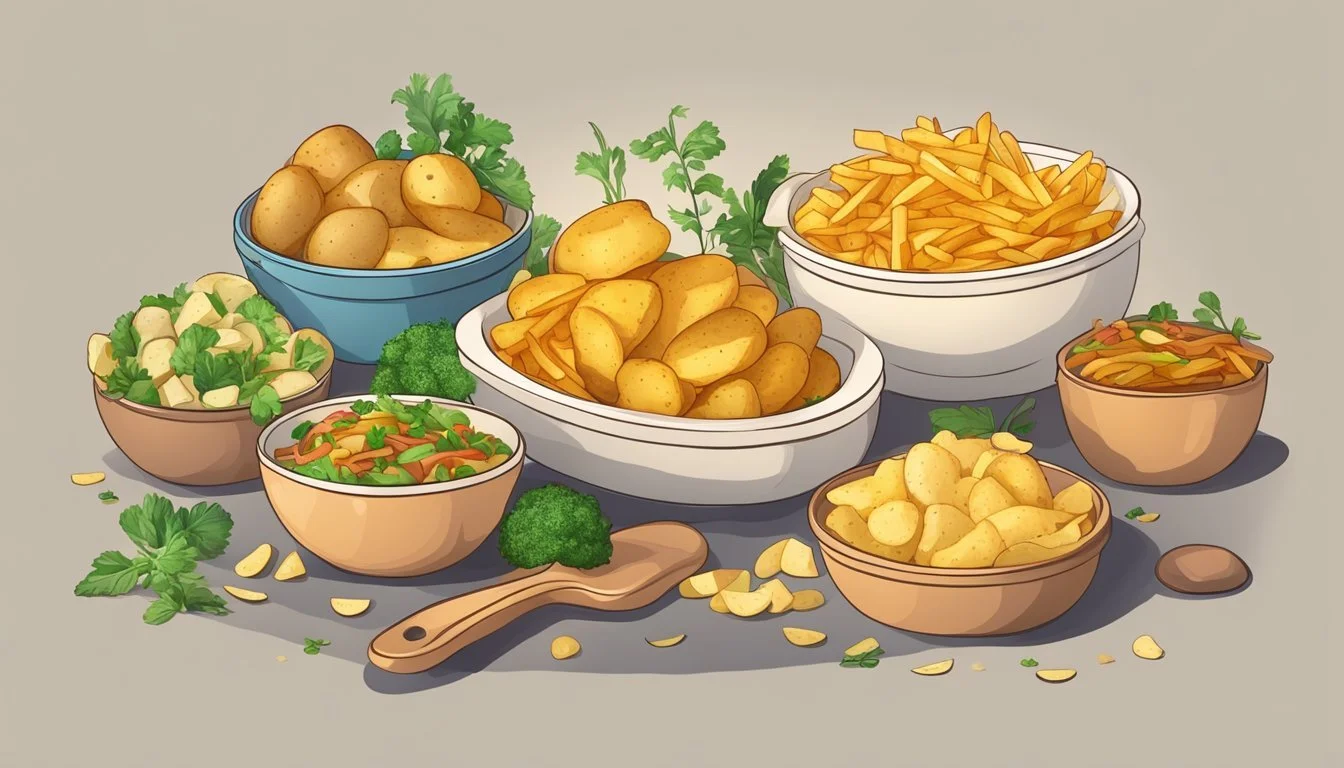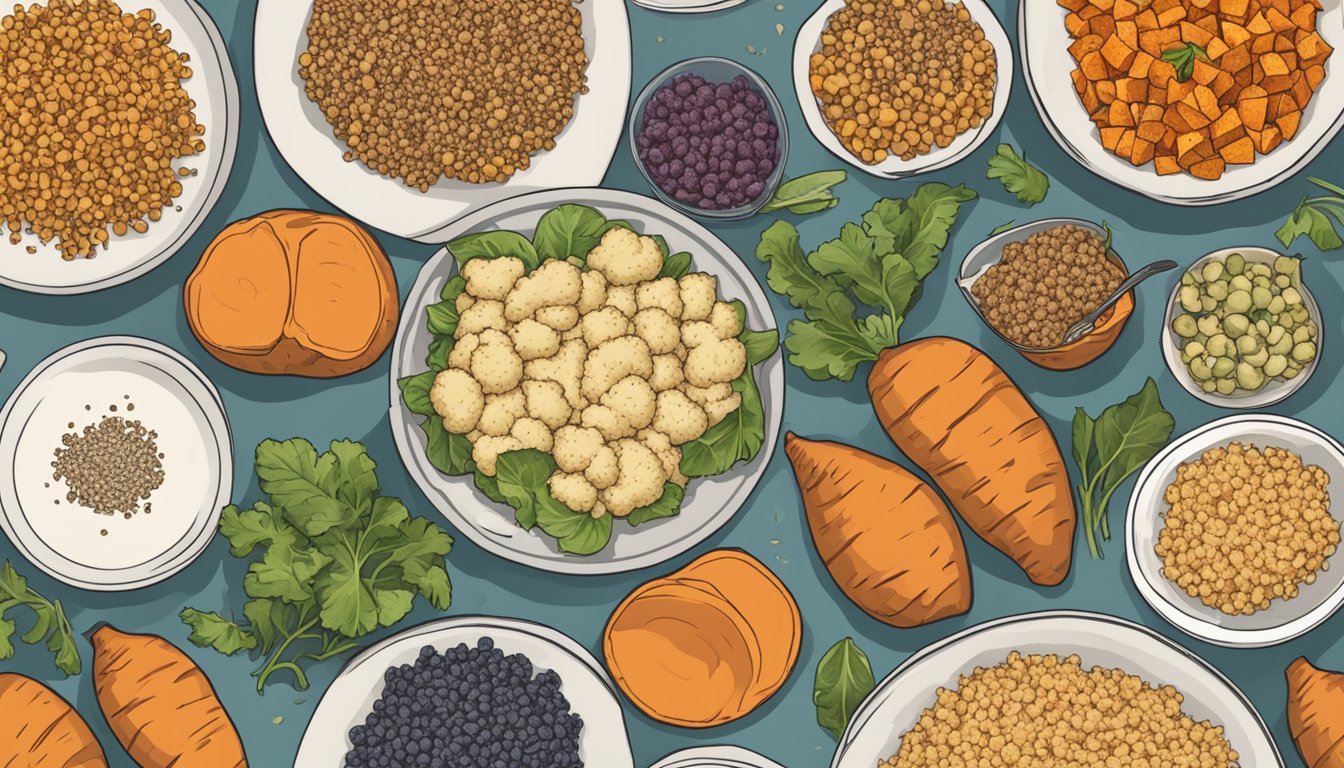How Many Servings of Potatoes Per Day Is Too Much?
Understanding Safe Consumption Limits
Potatoes are a staple in diets around the world, known for their versatility and nutritional content. They contain vital nutrients such as vitamin C, potassium, and dietary fiber. When consumed in moderation, they can be an excellent addition to a balanced diet. However, the frequency and quantity of potato consumption can tip the scales between beneficial and excessive. The key lies in understanding what constitutes a healthy portion and how often it can be included in daily meals.
Dietary guidelines do not prescribe a one-size-fits-all number of servings for any food, including potatoes. The appropriate amount can vary depending on individual nutritional needs, overall diet, and lifestyle. A medium-sized potato does contain roughly 168 calories, and adding this to a daily meal plan without offsetting it with physical activity could lead to weight gain over time. It's not just the quantity, but also the preparation method that matters; for instance, baking or boiling potatoes can make them a low-fat option, in contrast to frying.
Ultimately, potatoes can be part of a weight loss or maintenance plan if consumed mindfully. Dietitians often recommend a balanced approach that includes a variety of foods to meet nutritional needs. Regularly including a moderate serving of potatoes, while paying attention to the body's energy requirements and other dietary sources, can ensure that potatoes contribute to health without becoming excessive.
Nutritional Profile of Potatoes
Potatoes are a staple food in many diets and have a diverse nutrient profile. They contain a significant amount of carbohydrates, making them a primary source of energy. Notably, potatoes have very little fat and earn their high energy value through starches.
In terms of fiber, potatoes provide a moderate quantity, which contributes to digestive health. The presence of resistant starch is of particular interest, as it can benefit gut flora and may improve metabolic health.
Proteins in potatoes are present in moderate amounts. While they are not a primary protein source, they do contribute to the overall protein intake.
For calories, one medium-sized potato contains approximately 163 calories. This can vary depending on the potato's size and the cooking method.
Potatoes are particularly high in vitamin C, a powerful antioxidant. This vitamin plays a vital role in immune function and skin health. Additionally, potatoes offer a substantial supply of potassium, a mineral crucial for heart health and muscle function.
Iron is another essential mineral found in potatoes, though in lower amounts. It is vital for blood health and energy levels.
Other vitamins and minerals included in a potato's profile are various B vitamins, such as vitamin B6, and minerals like magnesium and zinc, supporting various bodily functions from enzymatic reactions to immune response.
Here is a basic breakdown of the nutritional content in a 100-gram serving of potatoes:
Calories: ~77
Protein: ~2 grams
Fiber: ~2.2 grams
Vitamin C: ~12.6 mg
Potassium: ~421 mg
Iron: ~0.31 mg
Overall, potatoes are nutrient-rich and can contribute to a balanced diet when consumed in appropriate quantities.
Health Benefits of Potatoes
Potatoes, when consumed as part of a balanced diet, bring numerous health benefits due to their high vitamin, mineral, and fiber content. These benefits include aiding weight management, regulating blood sugar, and maintaining healthy blood pressure levels.
Role in a Balanced Diet
Potatoes are a versatile food that can support a healthy diet when consumed in moderation. They are a source of complex carbohydrates that provide energy, are naturally fat-free, and contribute to satiety. The dietary guidelines recommend whole foods with fiber, and potatoes meet this criterion especially with their skin on.
Contribution to Weight Loss
While potatoes are starchy, they can be part of a weight loss diet due to their resistant starch content, which takes longer to digest, helping one feel full longer. This can reduce overall calorie intake by curbing the tendency to snack.
Blood Sugar and Blood Pressure Management
The fiber in potatoes helps slow down the absorption of carbohydrates, resulting in more stable blood sugar levels. Potatoes also contain potassium, a mineral that is essential for blood pressure regulation. Potassium works by balancing out the negative effects of salt.
Vitamin and Mineral Intake
Potatoes are rich in several key vitamins and minerals, particularly vitamin C which supports immunity, and vitamin B6, crucial for metabolism. A medium-sized potato provides about:
25 milligrams of vitamin C
1 milligram of vitamin B6
620 milligrams of potassium
It also contains other minerals such as magnesium and antioxidants, contributing to overall health benefits.
Recommended Serving Sizes
When discussing potato serving sizes, one must differentiate between serving size and portion size. The serving size is a standardized amount used to help give advice about how much food one should eat, while the portion size is the actual amount of food one chooses to eat at one time, which may be more or less than a serving size.
For potatoes, a single serving size can vary depending on the preparation:
Baked or Roasted Potatoes: A typical serving is about one medium-sized potato (2.5 to 3 inches in diameter) or 1 cup diced.
Mashed Potatoes: One serving equates to 1 cup.
French Fries: A serving is often considered to be about 20 fries (2.5-inch to 4 inches in length).
The American Heart Association provides guidelines for servings from the vegetable group, which includes potatoes. They suggest aiming for a total of four to five servings of vegetables a day. However, it's worth noting that potatoes should not make up all these servings due to their starch content.
It is critical for individuals to consider their overall nutritional needs and adjust potato serving sizes accordingly. Potatoes are a source of vitamins, minerals, and fiber, but they are also high in carbohydrates. Especially for those monitoring blood sugar levels or looking to maintain or lose weight, potato servings should be watched closely.
Potato serving sizes also play into portion control, which is an essential aspect of a balanced diet. Consuming potatoes in moderation, as part of a varied diet that includes a wide range of vegetables, is a confident step towards good health.
Potential Risks of Excess Potato Consumption
Potatoes can be a nutritious part of a balanced diet, but consuming them in excessive amounts may pose health risks. These risks vary from increased caloric intake, which can contribute to weight gain, to impacts on blood sugar levels and blood pressure.
Caloric Overload and Weight Gain
Potatoes themselves are low in calories, with a plain baked white potato containing only about 92 calories per 3.5-ounce serving. However, the way potatoes are often prepared can significantly increase their caloric content. For instance, the same portion of fried potatoes can have double or more the calories. Regular consumption of high-calorie potato dishes can contribute to caloric overload and subsequent weight gain.
Blood Sugar Spikes
Potatoes have a high glycemic index, particularly when cooked and cooled, such as in potato salad. This means they can cause rapid spikes in blood sugar levels when consumed. Frequent intake of high-glycemic foods can lead to repeated peaks in blood sugar, which may be a concern for individuals with or at risk of diabetes.
Impact on Blood Pressure
High intake of potatoes, especially in the form of fried dishes like French fries, is associated with an increased risk of high blood pressure. The added salts and fats in such preparations can exacerbate this effect. Conversely, boiled, baked, or mashed potatoes eaten in moderation and prepared without excessive salt or fat can be a healthier alternative that is less likely to affect blood pressure adversely.
How Potatoes Fit into Various Diets
Potatoes are a versatile food that can be included in various diets with consideration to their preparation methods and serving sizes. They provide important nutrients but can impact blood sugar levels and calorie intake.
Heart-Healthy Diets
In heart-healthy diets, potatoes should be prepared without adding excessive salt or unhealthy fats. It's recommended to use baking, steaming, or roasting potatoes rather than frying. Adding healthy fats like olive oil in moderation can enhance the nutrient profile. These diets often aim to manage hypertension, which requires monitoring sodium intake meticulously. Thus, potatoes should be seasoned with herbs and spices instead of salt.
Diabetes Management
Managing diabetes requires careful monitoring of carbohydrate intake. Potatoes have a high glycemic index and can raise blood sugar quickly. Individuals managing diabetes should consume potatoes in smaller portions and pair them with foods that have protein or healthy fats to slow the glucose absorption. Instead of white potatoes, which have higher glycemic load, one may opt for sweet potatoes as they have a lower glycemic index.
Weight Loss Plans
When it comes to weight loss plans, portion control is critical. The fiber content in potatoes promotes satiety, helping control appetite. However, one must be cautious not to overindulge as they are calorie-dense. Inclusion of potatoes should be balanced with other low-calorie, nutrient-dense foods to create a well-rounded diet.
Vegetarian and Vegan Diets
For individuals on vegetarian and vegan diets, potatoes are an excellent source of several key nutrients, including Vitamin C, potassium, and can be a valuable part of their meals. To ensure a complete amino acid profile, it's important to pair potatoes with other plant-based proteins such as legumes. One must also ensure they're getting sufficient healthy fats, which potatoes lack, from other food sources like nuts, seeds, and avocados.
Preparing Potatoes Healthily
When preparing potatoes, selecting the right cooking method can maintain their nutritional value while minimizing unhealthy additives. Opting for baking, steaming, or roasting can result in a healthful dish.
Baking
A baked potato can serve as a nutrient-dense option, given that it retains much of its dietary fiber and vitamins. To keep its health quotient high, one should avoid using high-fat toppings such as butter, sour cream, or excessive cheese. Instead, one can opt for Greek yogurt or a sprinkle of herbs to enhance the flavor.
Steaming
Steaming potatoes is another excellent way to preserve their nutrients, particularly vitamin C and B-complex vitamins. Since steaming requires no oil, this method reduced the addition of fats. Potatoes should be cut into uniform pieces to ensure even cooking, and they can be seasoned afterwards with a drizzle of olive oil and a pinch of herbs.
Roasting
Roasting potatoes can make for a crispy, satisfying side dish. The key to healthful roasting is to use a heart-healthy oil like olive oil in moderation. One can toss the potatoes in a mixture of oil, garlic, and rosemary for an aromatic and flavorful dish. Roasting at a high temperature can lock in flavors and crisp the exterior without relying on deep frying.
Unhealthy Potato Preparations to Avoid
When considering potato consumption, it's crucial to be mindful of preparation methods that significantly increase caloric content and decrease nutritional value.
Deep Frying
Deep frying potatoes to make fries adds a substantial amount of added fat and calories to the dish. A typical serving of deep-fried potatoes can contain double the calories compared to their baked counterparts. This method often involves submerging the potatoes in oil, which they absorb, leading to a higher caloric density and potential risks for cardiovascular health.
Excessive Toppings
Potatoes themselves can be a healthful choice, but loading them with butter, sour cream, bacon bits, and added salt can turn a nutritious potato into a dish high in saturated fats and sodium. For example:
Butter and Sour Cream: A tablespoon of butter adds around 100 calories and 11g of fat, while a dollop of sour cream can introduce additional fat and calories.
Bacon Bits: Sprinkling bacon bits not only introduces more added salt but also saturated fat, which can impact heart health if consumed in excess.
Salt: While it enhances flavor, too much salt can lead to hypertension and other health issues.
It's advisable to enjoy potatoes in moderation and be conscious of how they’re prepared to avoid these potentially unhealthy variants.
Choosing the Right Potato for Your Meal
When selecting potatoes for a specific dish, one must consider the starch content and how it affects the cooking process. There are generally two categories of potatoes: starchy and waxy.
Starchy vegetables, like russet or Idaho potatoes, are high in starch and low in moisture, making them ideal for baking and frying. When cooked, their structure breaks down, resulting in a fluffy and soft interior perfect for dishes that require a creamier texture, such as mashed potatoes.
On the other hand, varieties like red-skinned and fingerling potatoes belong to the waxy potatoes group. These have a firmer structure, retaining their shape well during cooking. Their creamy, moist texture makes them excellent for boiling and roasting.
For those looking into healthier or slightly different options, yams and sweet potatoes are nutritious starchy vegetables. They are not only rich in vitamins and fiber but also add a sweet richness to dishes. Sweet potatoes, in particular, are versatile and can be used in both savory and sweet contexts, from baked goods to casseroles.
Here is a quick reference for choosing the right potato:
Baked Potatoes and Fries: Use high-starch potatoes like russets.
Mashed Potatoes: Opt for russets or other starchy varieties for a fluffy mash.
Boiled Potatoes/Salads: Choose waxy potatoes like red-skinned or fingerling.
Roasted Potatoes: Waxy or all-purpose like white potatoes ensure they maintain shape and get a crispy exterior.
Casseroles and Pies: Sweet potatoes or yams provide a sweet flavor and creamy texture.
It's essential to match your potato choice with the cooking method to achieve the desired outcome, whether it’s a crisp, golden fry or a tender, flavorful roast.
Alternatives to Potatoes in a Diet
When reducing potato consumption, one can turn to a variety of other foods that provide similar satiety but with varied nutritional profiles. Non-starchy vegetables are excellent low-calorie substitutes, offering a wealth of vitamins and minerals. For instance:
Cauliflower can be steamed and mashed, mimicking the texture of mashed potatoes.
Leafy greens such as spinach and kale provide a nutritionally dense alternative with high levels of iron and calcium.
Fruits offer natural sugars and fiber:
Apples and pears are great choices as they have high fiber content.
For those looking to maintain a feeling of fullness, whole grains like quinoa or brown rice are superb options as both are rich in fiber and protein.
Including legumes such as lentils, beans, and chickpeas can not only add variety but also supply essential protein and fiber, contributing to a balanced diet. Here's a simple comparison:
Food Item Benefit Legumes High in protein and fiber Whole grains Sustained energy release Non-starchy vegetables Low in calories
Corn and peas, while often categorized as starchy vegetables, have a lower glycemic index than potatoes, making them a preferable alternative for maintaining blood sugar levels.
One can use corn as a sweet, crunchy addition to salads or alongside a protein source.
Peas can be pureed for a creamy texture or added whole to stir-fries and soups.
Each of these alternatives can contribute to a well-rounded diet and offer flexibility for those looking to decrease their potato intake without sacrificing nutritional value.
Conclusion
In determining the appropriate servings of potatoes one should consume daily, individuals are advised to consider the broader context of a balanced and healthy diet.
Daily Intake:
A single medium-sized potato per day can be part of a nutritious diet.
Potatoes are rich in vitamins, minerals, and fiber which are important components within the food group spectrum.
Caloric Content:
A key consideration is preparation method – a baked or boiled potato contains significantly fewer calories compared to fried potatoes.
Place in Diet:
As with any food, moderation is crucial. Potatoes should complement a variety of foods from other groups such as proteins, fruits, and vegetables.
The portion size should align with one’s overall caloric and nutritional needs.
Nutrition Balance:
While potatoes contain several beneficial nutrients, relying on them solely can lead to an unbalanced diet.
A diversity of food types ensures a more comprehensive intake of essential nutrients.
Adhering to these guidelines, individuals can enjoy potatoes as part of a healthy, nutritionally adequate diet without overindulgence.

